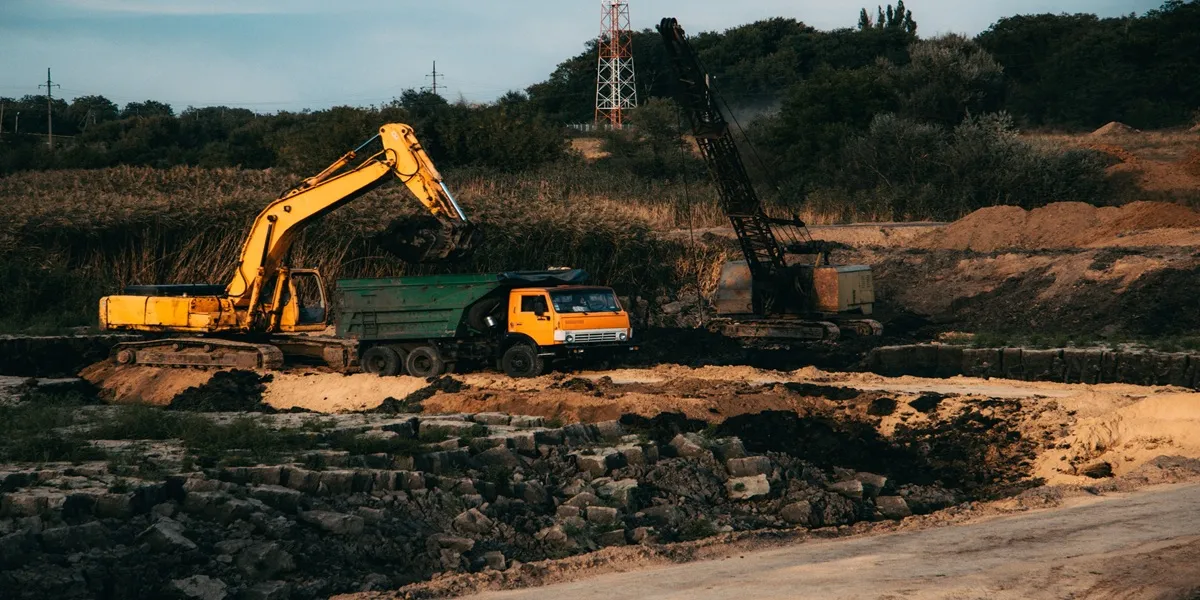The construction industry has been slow to adopt new technologies, but that is starting to change. In the past, construction projects were often managed using paper-based systems, which led to inefficiencies and errors. However, the rise of data technology is starting to revolutionize the construction industry.
In the past, construction projects were often managed using paper-based systems. This meant that information was often siloed and difficult to access. As a result, it was difficult to track progress, identify risks, and make informed decisions.
The construction industry has been slow to adopt new technologies, but this is starting to change. There are a number of reasons why the construction industry needs to change its approach to data technology.
-
Increased complexity of projects. Construction projects are becoming increasingly complex, with more stakeholders involved and more data to be managed. This makes it difficult to track progress, identify risks, and make informed decisions.
-
Pressure to improve efficiency. The construction industry is under pressure to improve efficiency and reduce costs. Data technology can help to improve efficiency by automating tasks, streamlining workflows, and providing insights into project performance.
-
Demand for sustainability. There is increasing demand for sustainable construction projects. Data technology can help to improve sustainability by reducing waste, optimizing resource use, and tracking environmental impact.
In addition to these reasons, there are a number of other benefits to using data technology in the construction industry. These include:
-
Improved safety. Data technology can help to improve safety by identifying hazards, tracking worker productivity, and providing real-time feedback.
-
Increased quality. Data technology can help to improve quality by ensuring that projects are completed to specifications and by identifying defects early on.
-
Enhanced communication. Data technology can help to improve communication between project stakeholders by providing a central repository for information and by enabling collaboration on projects.
Overall, there are a number of reasons why the construction industry needs to change its approach to data technology. Data technology can help to improve efficiency, sustainability, safety, quality, and communication in the construction industry. As the industry continues to evolve, data technology is likely to become even more important.
The construction industry is slow to adapt to new technologies, and data technology is no exception. There are a number of challenges that have prevented the industry from fully embracing data technology, including:
-
Lack of awareness: Many construction professionals are not aware of the benefits of data technology or how to use it.
High cost of investment: Data technology can be expensive to implement, especially for small businesses.
-
Resistance to change: The construction industry is traditionally resistant to change, and many professionals are hesitant to adopt new technologies.
-
Lack of integration: Many construction companies use a variety of different software applications, which can make it difficult to integrate data and share information across the organization.
-
Security concerns: There are security risks associated with storing and using data, and some construction companies are hesitant to adopt data technology because of these risks.
Despite these challenges, there are a number of reasons why data technology is important for the construction industry. Data technology can help to improve efficiency, safety, and quality control. It can also help to reduce costs and improve decision-making. As the construction industry becomes more data-driven, these challenges will likely be addressed, and data technology will become more widely adopted.
Here are some additional challenges that the construction industry faces in adapting data technology:
- Data silos: Data silos occur when data is stored in different systems that cannot communicate with each other. This can make it difficult to access and analyze data, and it can also lead to errors.
-
Lack of standardization: There is no single standard for data collection or storage in the construction industry. This can make it difficult to share data between different companies and organizations.
-
Skills gap: There is a shortage of skilled workers who know how to use data technology in the construction industry. This makes it difficult for companies to find the people they need to implement and use data technology effectively.
Despite these challenges, the construction industry is slowly starting to adopt data technology.
here are some compelling construction analytics examples that demonstrate the transformative power of data analytics in the construction industry:
-
Project planning and modeling. As mentioned in my knowledge, BIM simulation software can be used to visualize an entire project before construction even begins. This allows project stakeholders to identify potential problems and risks early on, and make adjustments to the plan accordingly. This can save time and money in the long run, as well as prevent costly delays or rework.
Predictive maintenance. Data analytics can be used to track the performance of construction equipment and identify patterns that indicate potential problems. This information can then be used to schedule preventive maintenance, which can help to prevent equipment breakdowns and keep projects on schedule.
-
Safety management. Data analytics can be used to track safety incidents and identify trends. This information can then be used to develop targeted safety initiatives that can help to reduce the risk of accidents. For example, data analytics could be used to identify areas of the construction site where accidents are more likely to occur, and then implement safety measures in those areas.
-
Cost estimation. Data analytics can be used to collect and analyze data from past projects to develop more accurate cost estimates for future projects. This can help to avoid cost overruns, which are a major problem in the construction industry.
-
Waste reduction. Data analytics can be used to track the amount of waste generated on a construction site. This information can then be used to identify areas where waste can be reduced, such as by improving material handling or recycling practices.
These are just a few examples of how data analytics can be used to transform the construction industry. As the technology continues to develop, we can expect to see even more innovative and impactful applications of data analytics in the years to come.
Here are some additional examples of how data analytics is being used in the construction industry today:
Optimizing supply chains. Data analytics can be used to track the flow of materials and equipment through the supply chain, identify bottlenecks, and make adjustments to improve efficiency.
Managing workforce productivity. Data analytics can be used to track the productivity of individual workers and teams, identify areas where productivity can be improved, and provide targeted training and support.
Enhancing customer satisfaction. Data analytics can be used to collect and analyze customer feedback, identify areas where customer satisfaction can be improved, and develop targeted initiatives to address those areas.
These are just a few examples of how data analytics is being used to improve the efficiency, productivity, and profitability of the construction industry. As the technology continues to develop, we can expect to see even more innovative and impactful applications of data analytics in the years to come.
The construction industry is increasingly using data technologies to improve efficiency, safety, and quality. Some of the most popular data technologies in construction include:
- Building information modeling (BIM): BIM is a digital representation of a building or infrastructure project. It can be used to track progress, identify potential problems, and simulate different scenarios.
-
Virtual reality (VR): VR can be used to create immersive experiences that allow users to walk through a building or infrastructure project before it is built. This can be helpful for visualizing design changes and identifying potential safety hazards.
-
Augmented reality (AR): AR can be used to overlay digital information onto the real world. This can be helpful for providing instructions to workers or for identifying defects in materials.
-
Machine learning (ML): ML can be used to analyze data and identify patterns. This can be helpful for predicting future demand, optimizing schedules, and preventing accidents.
-
Blockchain: Blockchain is a secure and transparent way to store data. This can be helpful for tracking the provenance of materials or for managing contracts.
These are just a few of the data technologies that are available in the construction industry. As the industry continues to adopt new technologies, we can expect to see even more innovative ways to use data to improve construction projects.
Here are some additional benefits of using data technologies in the construction industry:
- Increased efficiency: Data technologies can help to streamline processes and reduce waste, which can lead to significant cost savings.
-
Improved safety: Data technologies can be used to identify and mitigate risks, which can help to prevent accidents and injuries.
Enhanced quality: Data technologies can be used to ensure that projects are completed to the highest standards. -
Better decision-making: Data technologies can provide insights that can help project managers to make better decisions.
Overall, data technologies have the potential to revolutionize the construction industry. By adopting these technologies, construction companies can improve efficiency, safety, quality, and decision-making.
Data technologies can help in reducing the cost of supply chain management in a number of ways, ultimately lowering the cost of production. Here are some of the ways:
Improved visibility: Data technologies can help to improve visibility across the supply chain, which can help to identify and eliminate inefficiencies. For example, by tracking the movement of products in real time, companies can identify bottlenecks and delays that can be costly.
Optimized inventory management: Data technologies can help to optimize inventory management, which can reduce costs in a number of ways. For example, by using predictive analytics, companies can forecast demand more accurately, which can help to reduce the need for excess inventory.
Reduced transportation costs: Data technologies can help to reduce transportation costs by optimizing routes and scheduling shipments. For example, by using historical data and real-time traffic information, companies can identify the most efficient routes for their shipments.
Improved risk management: Data technologies can help to improve risk management, which can help to reduce the likelihood of costly disruptions. For example, by tracking weather patterns and supply chain disruptions, companies can be better prepared for unexpected events.
Overall, data technologies can help to reduce the cost of supply chain management in a number of ways, which can ultimately lower the cost of production.
Here are some additional examples of how data technologies are being used to reduce supply chain costs:
Amazon uses data analytics to predict demand for products, which helps them to avoid overstocking or understocking.
Walmart uses RFID tags to track the movement of products in their supply chain, which helps them to reduce theft and improve inventory accuracy.
UPS uses predictive analytics to identify potential delivery delays, which helps them to reroute shipments and avoid costly late fees.
These are just a few examples of how data technologies are being used to improve supply chain efficiency and reduce costs. As these technologies continue to develop, we can expect to see even more innovative ways to use data to optimize supply chains and lower costs.
The construction industry is ripe for a data revolution. By embracing digitization and implementing data analytics, construction companies can unlock the untapped potential of data to make more informed decisions, optimize processes, and boost profitability.
In conclusion, the construction industry is at a crossroads. It can either continue to operate in the traditional way, or it can embrace the data revolution and reap the benefits of improved efficiency, productivity, safety, and quality. The choice is clear.





















